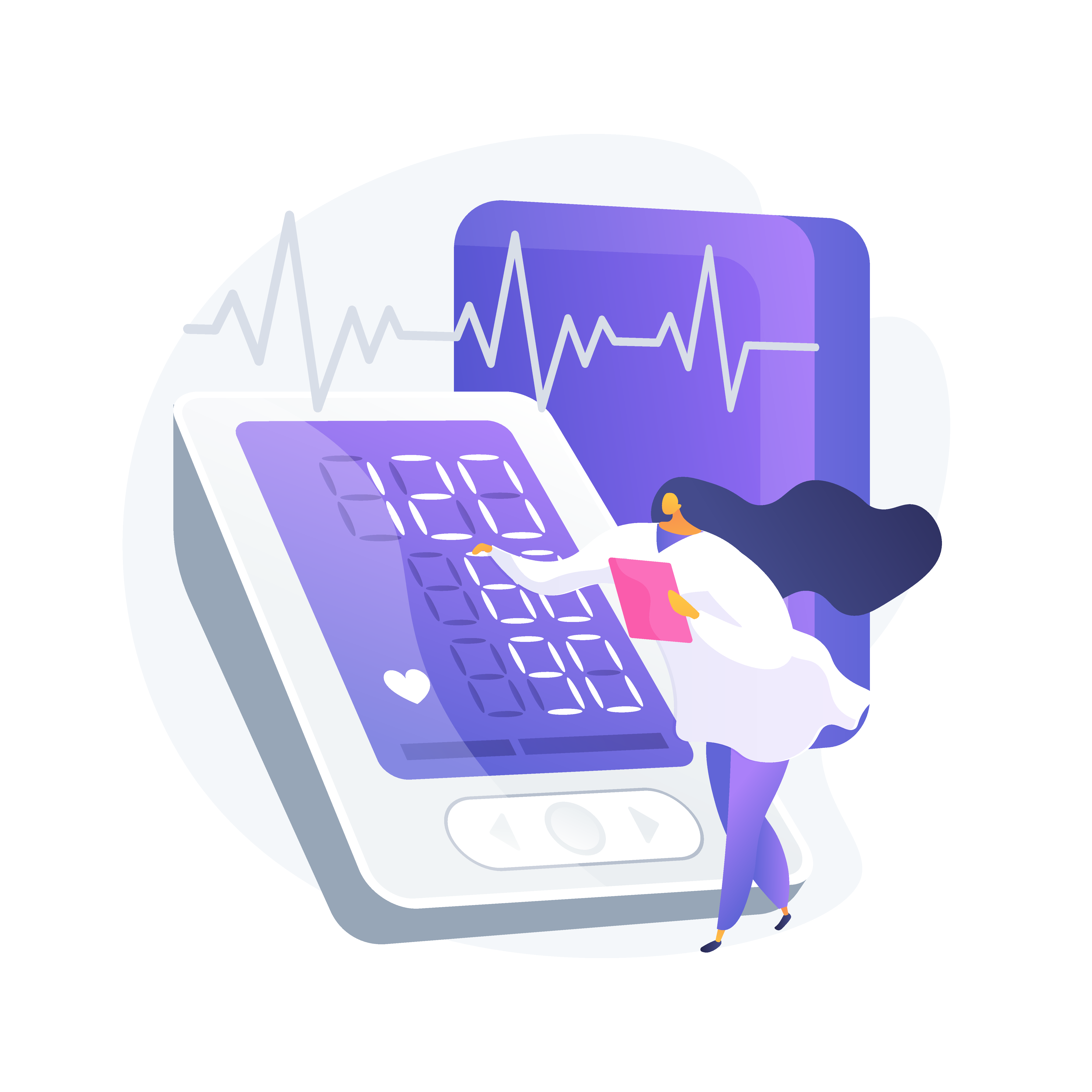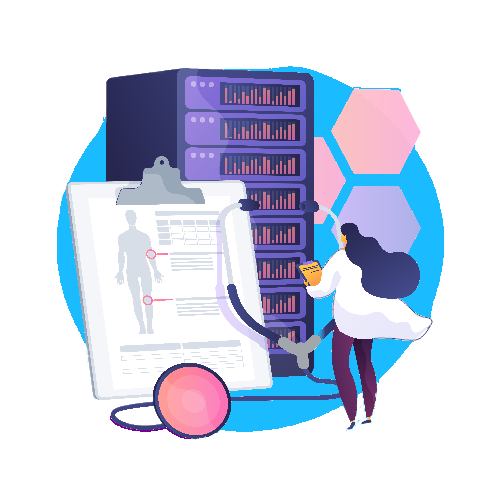Diabetes Overview
Types of Diabetes
There are two types of diabetes, each with their own implications for a person’s health and wellbeing. In both types of diabetes, the individual’s body does not properly break down sugars in their blood, which can lead to a number of complications if not attended to.

Type 1 Diabetes
Type 1 diabetes is an autoimmune condition where the body does not make insulin.
Type 1 diabetes happens when the body’s immune system attacked cells that produce insulin in the pancreas. As a result, the body does not make insulin. This means sugar in the blood cannot be turned into energy and gets stuck in the blood. This causes high blood sugars. People with type 1 diabetes must take insulin to help keep their blood-sugar levels in range.
It is important to remember that type 1 diabetes is not caused by eating too much sugar or fatty foods.
Symptoms:
When someone first develops signs and symptoms of type 1 diabetes, they may:
- Feel thirstier than normal
- Urinate more frequently
- Feel constantly tired
- Lose weight with no explanation
- Vomit
- Have blurred vision
- Have reoccurring infections or slow-healing wounds
Type 2 Diabetes
Type 2 diabetes happens when the body does not make enough insulin, or it does not respond to it effectively (known as insulin resistance). This means that sugar can’t move out of the blood and into the cells to give the body energy, and blood sugar levels slowly rise – leading to a person developing diabetes.
It is important to remember that type 2 diabetes is not caused by eating too much sugar or fatty foods. It is often caused by things outside of people’s control like their family history, their age and the medications they need to take for other conditions.
When someone first develops signs and symptoms of type 2 diabetes, they may:
- More frequent urination
- Feeling thirsty more often
- Feeling constantly tired
- Blurred vision
- Impotence
- Frequent/recurring skin infections and rashes
- Tingling sensation in the fingers or toes
- Constant dry skin
- Slow-healing wounds
Diabetes Management
People living with diabetes can live a normal life. While diabetes is a serious condition, it can be managed. How people look after their diabetes differs for each person. Key thing people living with diabetes needs to think about are getting regular exercise, eating healthy, and taking their medications. For some people living with diabetes they need to check their blood sugars regularly. As a support person, it is important to know how the person you support manages their diabetes and how you can provide support.

General Diabetes Management
There are some general things to know about diabetes management:
- Understand that diabetes can be managed
- Ensure diabetes management plans are taken seriously and followed
- Know how the person you support manages diabetes
- Know how you can provide support to help the person manage their diabetes
- Know what to do should the person you support get sick or experience high/low blood sugars
The content on our website will help you learn about living with diabetes and how it’s managed. To help you work out what you need to know or learn, use the checklist to mark off what the checklists below to ensure you (diabetes support person) are aware of the following:
EXERCISE
- Know how exercise impacts diabetes
- Know the person’s exercise program
FOOD
- Make sure the person eats meals at the same time each day
- Know eating-out skills
- Know about grocery shopping skills
- Know about meal preparation
MEDICATION
- Know where medication is stored
- Know how the person takes medication
- Know dosage and times
BLOOD SUGAR TESTING + LEVELS
- Know what the person can do for themselves
- Know where the kit is kept
- Know how to take blood glucose levels (specific to each machine)
- Know how and where to record levels
- Understand the ranges and what they mean
- Know the appropriate action to take
- Know the symptoms of low blood glucose and what actions to take
- Know the symptoms of high blood glucose and what actions to take
- Keep records
INSULIN
- Know what the person can do for themselves
- Know where insulin is kept
- Know how to properly store insulin
- Know time of injections
- Keep a record of the dosage and site
Management for Diabetes Type 1 and 2
Type 1
Managing type 1 diabetes is mostly done by the individual and their supporters with input from their diabetes healthcare team. The aim is to have blood sugar levels within a target range. Day to day management involves:
- Taking insulin
- Monitoring blood sugar levels
- Eating healthy foods
- Regular exercise
- Daily foot checks for any sores, calluses, or cuts
It is important to also have regular health checks with your diabetes team.
Type 2
Managing type 2 diabetes is mostly done by the individual and their supporters with input from their diabetes healthcare team.
The first step is to exercise regularly, eat healthy food, maintain a healthy weight, and following alcohol and smoking guidelines.
Your diabetes healthcare team may ask an individual to monitor their blood sugar levels.
Sometimes people need to take medications to help manage their type 2 diabetes. There are many different types of medications. Some reduce how much sugar is released into the blood, some help the pancreas make more insulin and some help the body use insulin better. Sometimes an individual may need to take insulin.
Insulin
All people with type 1 diabetes and some people with type 2 diabetes require the use of insulin as their bodies do not produce it on their own. There are different types of insulin, given by injection. These injections help to control the level of blood sugar in those with diabetes.

About Insulin
If a person with diabetes misses a meal after having an insulin injection, their body will not have the required energy source to convert into sugar. The insulin will then use up the sugar left in the body, resulting in low blood sugar levels. On the other hand, if too much food is consumed, blood sugar levels will rise.
If the person exercises, they will need to eat more food or adjust their insulin intake as exercise causes insulin to work more efficiently. Unplanned physical activity can have a negative impact on blood glucose levels.
Types of insulin
- Fast acting insulin: starts to have effect in under 20 minutes, reaching its peak about 1 hour after and lasting aprox 3-5 hours. After injection, it is important to eat right away to avoid hypoglycaemia.
- Short-acting insulin: starts to have effect after approximately 30 minutes, reaching its peak 2-4 hours after injections, and lasts for 6-8 hours.
- Intermediate-acting insulin: starts to take effect in approximately 1.5 hours, effects peak at 4-12 hours, and lasts for 16-24 hours.
- Long-acting insulin: is effective for 24 hours at a steady dose (no peak)The doctor is responsible for prescribing the amount, frequency, time of day, and type of insulin required to control blood sugar levels for the person under your care. No additional insulin should be administered without prior approval from a healthcare professional.
Storage of insulin
Insulin must not be frozen, exposed to heat, or exposed to direct sunlight. It should be protected from light by keeping cartridges in the carton when not in use. Once insulin is opened it should be stored in a sealed container in the fridge. Insulin can be used for up to 4 weeks after being removed from the fridge, once temperature ranges are maintained. Insulin can be kept out of the fridge while on outings etc and does not need to be transported in cold storage. It should be kept in a bag away from direct sunlight.
Administering Insulin
Needle Phobia
Some people may have a fear of needles. Some techniques to deal with this include learning relaxation techniques and desensitisation programmes. There are also insulin injectors available that hide the needle from view, which could aid in easing anxiety surrounding injections.
Who gives the injections?
In most cases, individuals with diabetes will self-inject, however, some people may rely on support persons to administer their insulin. If a problem with giving the injections arises, this should be discussed with the doctor.
How and where to inject?
Before administering insulin, the support staff should receive adequate training in subcutaneous administration. The needle should be inserted at a 90degree angle into the subcutaneous (fatty) layer of skin. It should be administered into the abdomen, avoiding the belly button, into the upper thigh and upper back of arms. When injecting insulin you should avoid areas with bruises, abrasions or scars and the injection site should be alternated to avoid scar tissue forming.
Used needles
Needles are one time use and should be disposed of using a designated ‘sharps’ container, yellow bin. When full, the sharps container needs to be closed tightly and placed into a garbage bin.
Insulin and meals
Ideally, a meal should be eaten 15-30 minutes after taking long-acting or regular insulin. For fast-acting insulin, a person should eat within 15 minutes to avoid hypoglycaemia. If insulin has already been administered and the meal is delayed, a carbohydrate snack, such as bread, should be eaten in the meantime.
For more information on how to take insulin, visit the QCIDD YouTube channel, or click this link: Taking Insulin
Privacy & Understanding the Effects of Diabetes
Having diabetes, just like any other medical condition, is a personal issue and privacy must be respected. Many people can manage diabetes on their own and do not feel the need to tell others about their condition, however, it is recommended that the person wear a medical identification bracelet if taking insulin or diabetes medication. This is so that in emergency situations, medical professionals can quicky identify and properly treat the issue at hand. If a person with diabetes requires support from others, key people in their life should be told (especially if they are at risk of hypoglycaemia).

Effects of Diabetes
How does food give the body energy?
All parts of the body require energy to function, which comes from the food we eat. When food is consumed, it enters the stomach where acids and enzymes break it down into sugar and other things. Sugar is the fuel that gives the body energy and is absorbed by the stomach and small intestines then released into the bloodstream. Insulin is then needed to help sugar enter muscle cells so the body can use it for energy.
What happens to the body with diabetes?
Diabetes occurs when the pancreas does not produce enough insulin, or the body is not effectively using the insulin it does produce. This means that insulin cannot help the body use sugar for energy, resulting in it staying in the bloodstream rather than getting into cells. When this occurs, blood sugar levels become too high. Blood vessels can become weakened and begin leaking, while other times they can become blocked, leading to long-term complications. Leaky or blocked blood vessels can lead to heart attacks, strokes, and blindness, which is why it is so important to learn how to properly manage the condition.
Privacy and Understanding
Diabetes and its effect on people
Diabetes can be stressful and frustrating to manage initially for everyone involved. When first diagnosed with diabetes, the person is given a lot of information about the lifestyle changes they’ll have to make to properly manage their condition, which can be overwhelming. Everyone reacts differently to receiving a diagnosis and it is common to feel anxious or scared at first. The person may need to adjust their diet and increase exercise levels, which can be difficult for anyone regardless of a diabetes diagnosis. Having diabetes requires more visits to health professionals and their life must be monitored more closely, which can be burdensome and emotionally draining. Due to all of these changes in someone’s day-to-day life, it is common for people with diabetes to feel like they are missing out on things others get to do, or that their diagnosis is taking over their life. As a result, those with diabetes are at greater risk of depression, anxiety, and eating disorders.
Stress management and mental health
Prolonged stress can lead to a rise in blood sugar levels, making diabetes management more difficult. It can be helpful to try and identify potential causes of stress and a person’s early signs of stress. Common symptoms of stress include headaches, irritability, back pain, poor sleep, muscle tension, and teeth grinding/clenching. Some common relaxation techniques to manage stress include:
- Listening to music
- Going for a walk outside
- Reading a book
- Meditation or yoga
- Speaking to a counsellor
As people with diabetes are at higher risk of developing depression, anxiety, or eating disorders, it is important to know that many different forms of help are available. Ask the person’s diabetes care team for referrals to a mental healthcare provider, such as a psychologist, psychiatrist, or therapist. Talk therapy can be very helpful in identifying problems, finding solutions, and learning coping skills. In addition to therapy, medication is also available.
